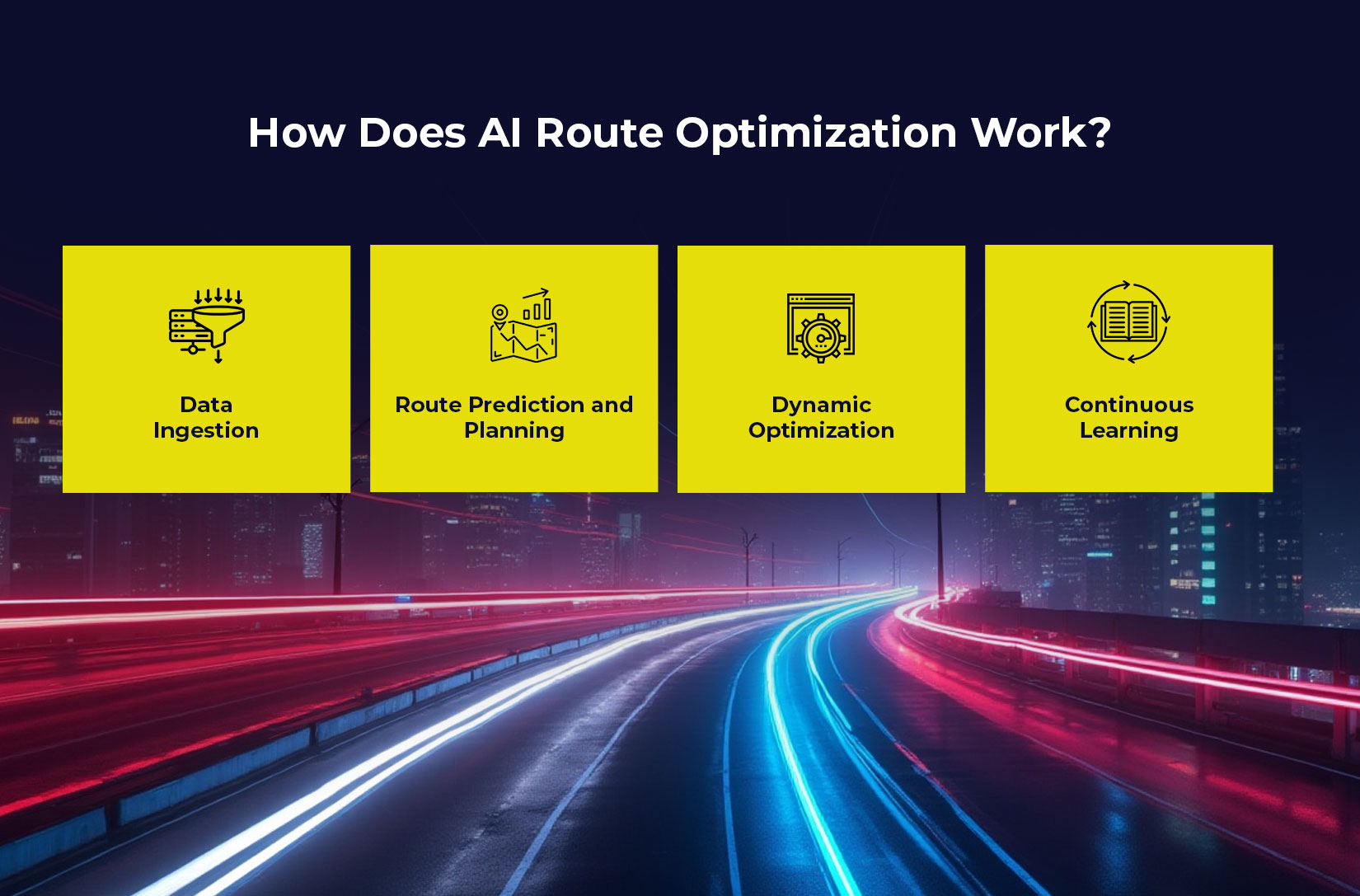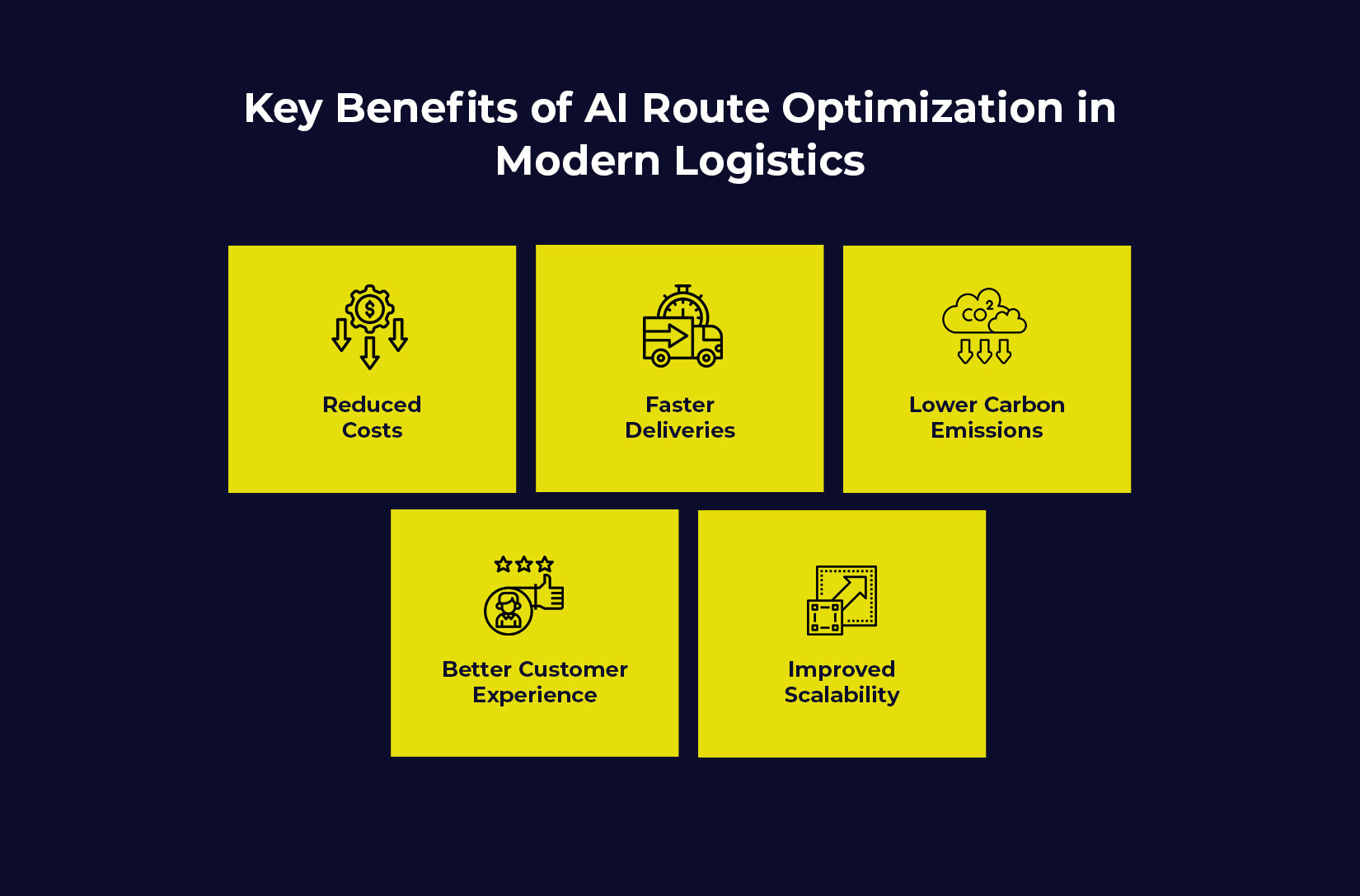
What is AI Route Optimization and How Does it Work in Modern Logistics?
The logistics industry today demands a high level of speed and accuracy. Routing effectiveness is dependent on route planning, which encompasses tasks such as eCommerce deliveries, retail distribution, and field service management. And that’s where AI route optimization comes in. Automating and optimizing route planning through the use of artificial intelligence to reduce delivery times, decrease fuel expenses, and improve customer satisfaction.
In logistics, how does AI optimize routes and what are the practical applications of this technology? Why are more and more companies opting for AI route optimization software that is considered superior?
What is AI Route Optimization?
Optimizing the route of delivery vehicles using AI, machine learning algorithms and artificial intelligence is the process of routing. In comparison to traditional route planning, which rely on static maps or manual scheduling, AI route optimization uses dynamic analysis to address multiple factors in real-time. Real-time information on traffic, weather conditions, vehicle size, delivery time windows, and road restrictions.
This advanced technology allows logistics teams to:
– Minimize delays and rerouting.
– Maximize delivery efficiency.
– Reduce fuel consumption and carbon emissions.
– Improve ETAs and customer satisfaction.
People are unable to use AI route optimization software, which is its fundamental function. By handling vast amounts of data, it can make intelligent decisions that affect the logistics operations in the real world.
Why Traditional Route Planning Falls Short
Legacy route planning tools often rely on static datasets and limited logic. They may generate routes based on distance alone, without accounting for:
– Real-time traffic congestion.
– Road closures or accidents.
– Vehicle-specific constraints (e.g., height or weight limits).
– Customer-specific delivery time windows.
– Driver availability or shift patterns.
This creates inefficiencies, including delayed deliveries, increased driving time, and higher fuel expenses. Conversely, an AI routing system utilizes historical learning and real-time monitoring to adjust routes to reflect current situations.
How Does AI Route Optimization Work?

Here’s a simplified look at how this functions:
1. Data Ingestion:
AI systems gather GPS, traffic, weather, logistics, and inventory data to enable real-time, intelligent routing, dispatching, and delivery optimization.
2. Route Prediction and Planning:
Machine learning models analyze collected data to predict the best departure times using demand forecasts and determine the optimal sequence of stops. They also identify the fastest routes within delivery time windows and suggest alternate routes in case of disruptions.
3. Dynamic Optimization:
In contrast to fixed planning software, AI route optimization products offer dynamic rerouting in real time. The system remaps the route dynamically and alerts drivers via the mobile terminal when there is a traffic jam or customer reassignment.
4. Continuous Learning:
The advancement of AI systems is a continuous process. The improvement of recommendations for future routes is based on their analysis of past performance, traffic habits and driver behavior. Logistics efficiency is continuously improved by this.
Key Benefits of AI Route Optimization in Modern Logistics

Implementing the best AI route optimization software can result in significant advantages:
1. Reduced Costs:
By optimizing routes with AI, unnecessary mileage and idle time are eliminated to save on fuel costs as well as on maintenance. Research indicates that optimizing routes can result in fuel savings of up to 20%. Over time, the savings can add up quickly, especially for companies with large fleets spanning diverse regions.
2. Faster Deliveries:
Real-time traffic information is used by machine learning algorithms to create shortcuts and minimize delivery times. Businesses can now achieve tighter delivery windows and process more orders in a single shift, leading to increased throughput.
3. Lower Carbon Emissions:
By optimizing fuel efficiency and driving time, companies can decrease their carbon footprint while meeting sustainability goals. Lower emissions levels allow companies to meet green compliance regulations and corporate ESG goals more effectively.
4. Better Customer Experience:
Customers can expect their shipments to arrive promptly with more certainty, thanks to accurate ETAs and reduced delays, which boosts satisfaction and loyalty. The use of AI can enhance the transparency of in-transit delivery status updates for customers.
5. Improved Scalability:
With an AI-based route optimization system, it can efficiently optimize routes for any fleet or location and manage deliveries of 10 to 10,000 deliveries. It quickly adapts to volume increases, seasonal changes, and geographic expansion.
Real-Word Use Cases of AI Route Optimization

E-Commerce and Last Mile Delivery
Delivery platforms and retail giants utilize AI route optimization to ensure deliveries are made on time during holidays. What steps can be taken? AI determines optimal routes in real-time, resulting in thousands of daily deliveries. Why? This is accomplished by taking into account traffic, delivery windows and driver availability.. It reduces the likelihood of delayed deliveries, enhanced customer experience and increased fleet utilization across service areas.eu.
Cold Chain Logistics
Perishable goods demand tight delivery times and refrigeration conditions. AI can deliver when deliveries are due by constantly monitoring traffic patterns and roadblocks, as well as identifying the most efficient routes. This ensures that there are fewer delays, better product quality, and minimizes spoilage. AI can aid logistics personnel in rerouting themselves in the event of unexpected disruptions to maintain their service-level agreements (SLAs).
Field Services and Maintenance
By utilizing AI route optimization software, utility companies and service technicians can decrease drive time between stops. By allocating jobs efficiently and minimizing idle time, technicians can complete more work in one day. Therefore, improving efficiency and reducing expenses while also increasing response times to customers.
Adoption Trends and Market Stats
a) Allied Market Research projects that the global route optimization software market will reach $10.4 billion by 2032, growing at a CAGR of over 15%.
b) Companies that utilize route optimization software report a 15-25% increase in their delivery productivity.
c) It is estimated that over 60% of logistics companies will utilize AI-based optimization software in the next two years. As a result, they can handle rising delivery demands while also cutting costs.
Also Read: From GTA to GPS: How Delivery Route Planners Keep It Legal (and Fast)
Conclusion
In an age where every second and cent counts, AI route optimization is not just a nice-to-have, it’s a logistics necessity. From enabling same-day deliveries to reducing fuel costs and emissions, AI transforms route planning into a smart, data-driven function.
By investing in the best software, businesses gain the competitive edge needed to scale operations. With this they can satisfy customers, and stay agile in a constantly shifting logistics environment. So, book a demo with LogiNext Solutions and get the best AI-powered route optimization software today.
64







@LogiNext